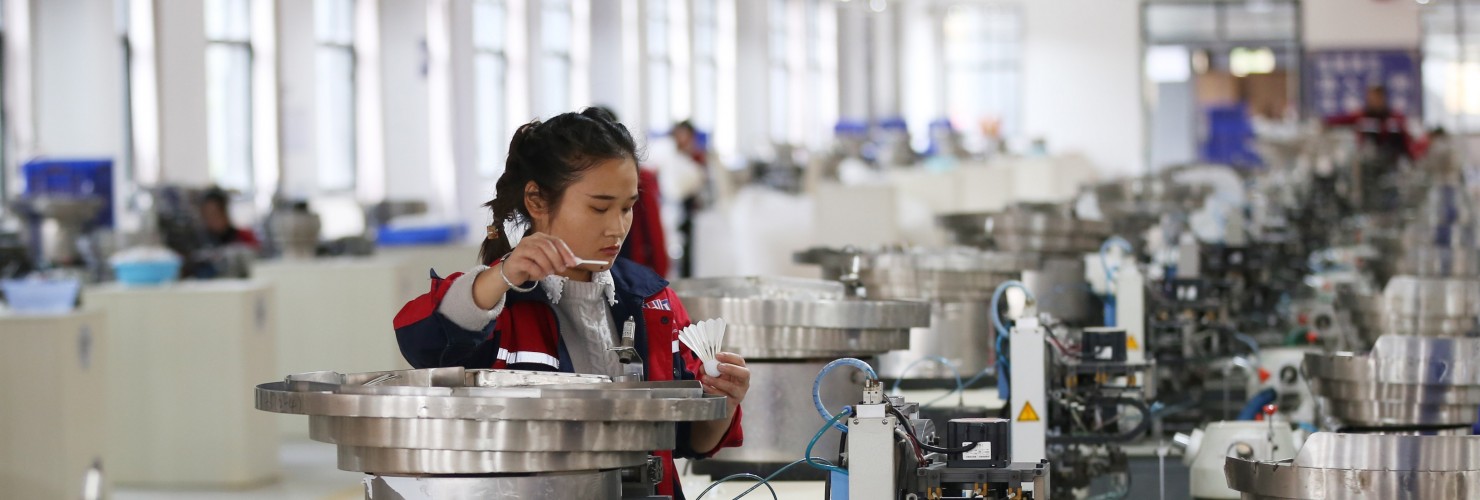Surging exports and imports as well as improved consumption were an attestation to the strength of China’s economy. The effective containment strategy for the virus and quickly implemented stimulus measures have been key to turning the economy around after its historic contraction in the first quarter. The CCP can now, with great confidence, start getting ready for the Party’s centennial celebrations in 2021.
The rebound gathered pace over the third quarter, expanding the economy by 4.9 percent. With GDP for the first three quarters increasing by 0.7 percent, China looks likely to be the only large economy in the world that will end the year with positive economic growth. For foreign investors China has become something of a safe haven, with investments flowing into the country.
Pictures of masses of travelers packing train stations and flocking to China’s main tourist destinations over the national day holiday in early October were clearly intended to send a strong signal: China’s economy is roaring back to life.
Compared to the fairly rapid rebound in manufacturing and investment over the first half of the year, the recovery in household consumption has lagged. A strong comeback in travel activity ought to be evidence that all is back to normal. However, the total number of trips during the “golden week” holiday was 20 percent below last year. This comes despite the holiday week being 8 days long, compared to 7 last year, due to coinciding with the mid-autumn festival.
That should be a reminder how deep the economic impact of the pandemic was on China’s economy. The recovery is still unbalanced with household consumption only slowly picking up pace. A weak labor market and low wage growth are key factors constraining households’ appetite for consumption. The stability of China’s financial system remains another vulnerability. The government’s stimulus was successful in shoring up GDP growth, but has also resulted in accelerating credit growth.
Stimulus measures are likely to stay in place until household consumption and the labor market are on a more solid footing. But bar a second Covid-19 outbreak, China’s economic recovery is well on track.
The MERICS China Confidence Index (MCCI) measures household and business confidence in future income and revenues. The index is weighted between household and business indicators. It includes the following indicators: stock market turnover, future income confidence, international air travel, new manufacturing orders, new business in the service sector, urban households’ house purchase plans, venture capital investments, private fixed asset investments and disposable income as a share of household consumption. All components have been tested for trends and seasonality. The MCCI was first developed in Q1 2017.

picture alliance / Xinhua News Agency | Yang Xiaohai.
Monetary policy remains active in supporting the economy and asset prices, and in ensuring sufficient liquidity to avoid distress. The PBOC left reserve requirements and interest rates unchanged in Q3 and was, instead, very active with injections. Since June, the PBOC has lent a total of 5.2 trillion CNY through its medium-term lending facility.
As a result, leverage has increased. By the end of Q3 aggregate outstanding credit had grown by 13.5 percent compared to 12.75 percent at the end of Q2. Credit growth has accelerated significantly during the past three quarters, but nominal GDP, which captures the ability to service that debt, has not grown at anything like the same pace.
The Chinese government has been keen to build the domestic bond market. But it looks like the bond market’s growth has peaked for the moment: outstanding corporate bond financing, which had accelerated throughout the year, slowed somewhat in Q3, growing at 20.6 compared to 21.4 percent in Q2.
Shadow banking aggregates are recovering, likely driven by the needs of the underfinanced private sector. Total credit outstanding in shadow banking aggregates is now 3 percent lower than last year, compared to 5 percent in Q2.
China’s stock market is performing well in comparison to global indices. After taking a beating in the first part of the year, equities are now up 7 percent ytd. The Chinese stock market has benefitted from foreign capital inflow, a recovering economy, loose monetary policy and several large IPOs.
The quality of credits in the financial system, particularly those tied to property markets, remains highly questionable. Evergrande, China’s largest property developer, has been struggling with enormous debts at high interest rates.
What to watch: The US may introduce financial sanctions on China.
No comments:
Post a Comment